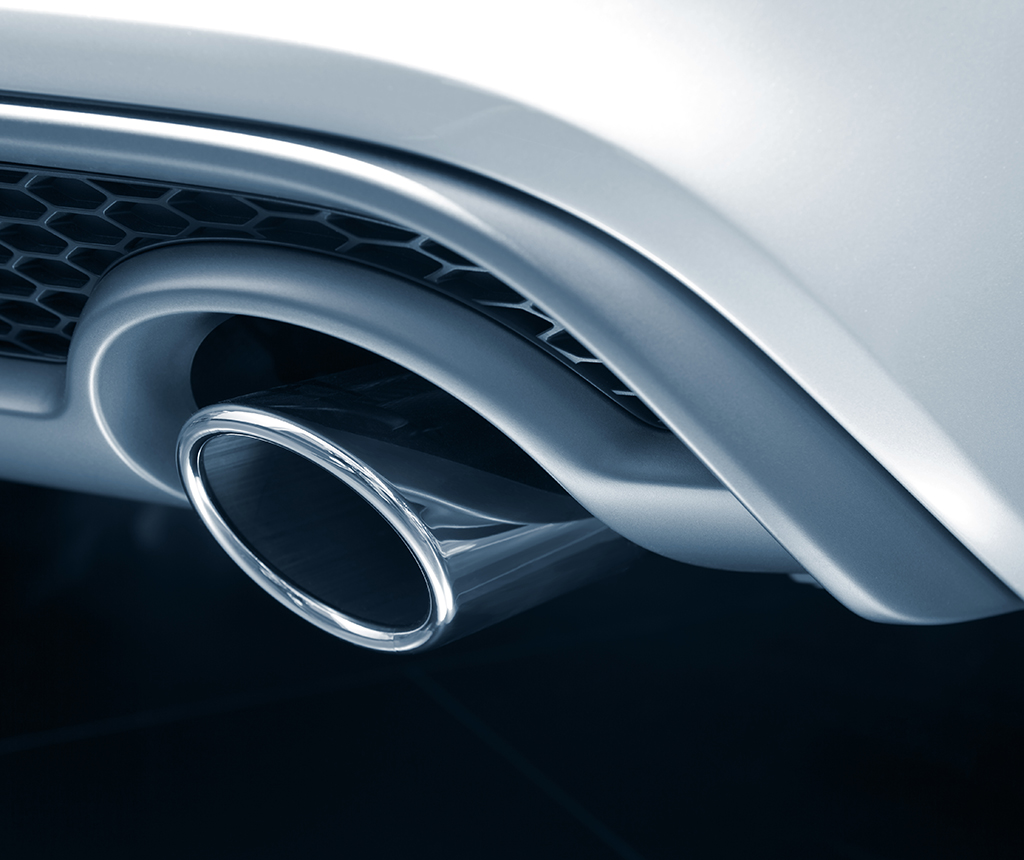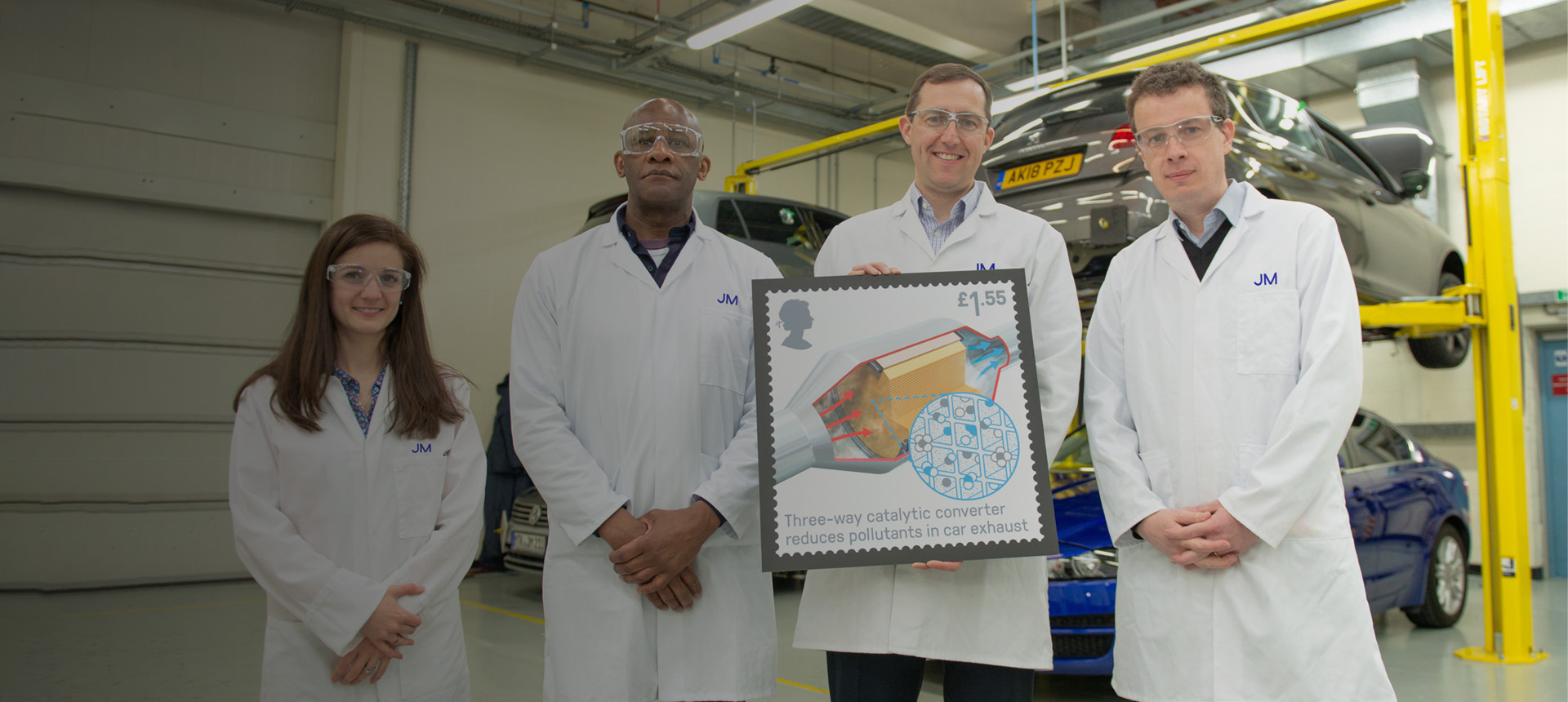What metal is in a catalytic converter?
Catalytic converters clean up emissions from gasoline and diesel vehicles using metal catalysts which usually contain platinum, palladium and rhodium. These catalysts are in the form of nanoparticles, coated on a substrate, or ‘brick’. Catalytic converter chemistry depends on whether you have a gasoline or diesel engine - each need different catalyst systems.
Gasoline
Three-way catalyst (TWC)
Most gasoline car engines these days are fitted with a TWC, so called because it undertakes three reactions at the same time.
- Carbon Monoxide (CO) - Carbon Dioxide (CO2)
- Hydrocarbons (HC) - CO2 + Water (H2O)
- Oxides of Nitrogen (NOx) - Nitrogen (N2)
Read more
Three-Way Filter® (TWF®)
Gasoline Particulate Filters (GPF) reduce the number of particulates emitted by up to 99%. When coated with a TWC this creates the TWF which then controls gaseous emissions and particulate number.
Diesel
Diesel Oxidation Catalyst (DOC)
Diesel engines normally run lean (more air than fuel), and therefore a diesel autocatalyst usually operates as an oxidation catalyst (which is why it is known as a diesel oxidation catalyst or DOC) cutting CO and HC emissions by more than 90%.
- Carbon monoxide (CO) - Carbon Dioxide (CO2)
- Hydrocarbons (HC) - Water (H2O) and CO2
- Nitrogen Oxide (NO) - Nitrogen dioxide (NO2)
Selective Catalytic Reduction (SCR)
This reduces NOx to nitrogen using ammonia. This catalyst does not contain precious metal and is typically made from copper or iron zeolite or vanadium-titania.
- NOX + ammonia -Nitrogen (N2)+ Water (H2O)
Read more
NOx Storage Catalyst (NSC)
This stores any NOx produced at low temperatures this is allows effective control of cold start emissions until the SCR catalyst is fully effective. A diesel engine runs fuel lean (air rich), but the NSC reduces the NOx to N2 using a fuel rich / air lean purge which also regenerates the NSC.
Ammonia Slip Catalyst (ASC)
This removes any ammonia that might not be converted in the selective catalytic reduction.
Read moreCatalysed Soot Filter (CSF)
Applying a catalyst coating such as a DOC to a Diesel Particulate Filter (DPF) creates the CSF product to reduce diesel particulates and help control gaseous emissions. Diesel particulate filter (DPF) removes particulate matter from diesel exhaust by physical filtration.
Read moreSelective Catalytic Reduction Filter® (SCRF®)
Some cars use SCR bricks that also function as a particulate filter (‘SCRF’), eliminating the need for a separate pgm-containing diesel particulate filter (DPF). These SCRF and SCR bricks are used in series with one or more platinum-rich catalysts, usually a diesel oxidation catalyst (DOC), although a wide variety of catalyst combinations and configurations exists.Combine an SCR with a DPF and you can reduce the NOx to N2 whilst also removing the particulates.
How much platinum is in a catalytic converter?
Each year, about 90 tonnes of platinum, 300 tonnes of palladium and 30 tonnes of rhodium are used globally for catalytic converters – both diesel and gasoline. But, 30 -50% of this comes from recycling. Johnson Matthey is committed to sustainability, and both makes emission control catalysts, and recycles catalytic converters and other pgm waste to extract and re-use the precious metals in them. Each year, we refine enough pgms to make millions of catalytic converters.
Why are precious metals used in a catalytic converter?
Catalytic converter catalysts convert over 90 per cent of hydrocarbons, carbon monoxide and oxides of nitrogen into less harmful carbon dioxide, nitrogen and water vapour. Precious metal catalysts are very effective and stable at high temperatures, and they are durable enough to last the lifetime of a car. Although inert as a solid metal, when finely divided as nanoparticles (which are coated on a support) they become active catalysts, so only a small amount of precious metal needs to be used to remove harmful pollutants and particulates from the air we breathe.




